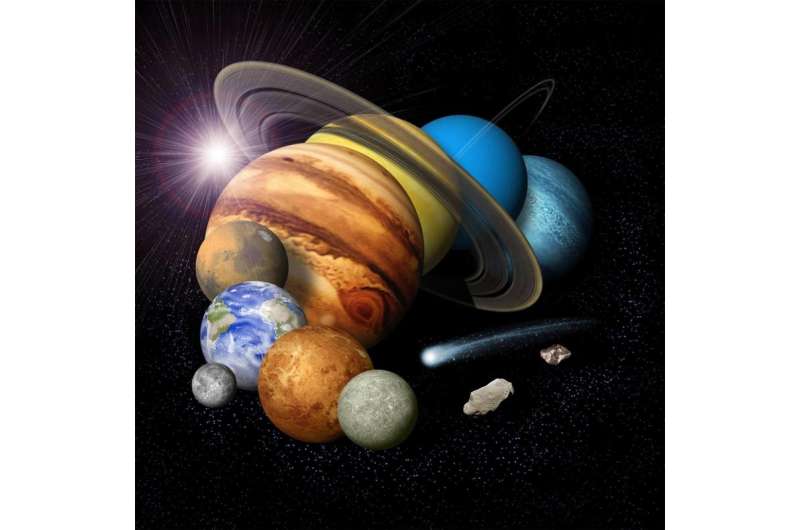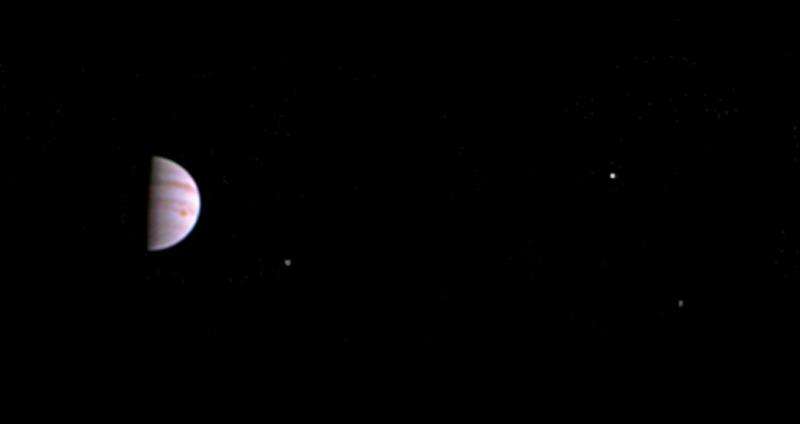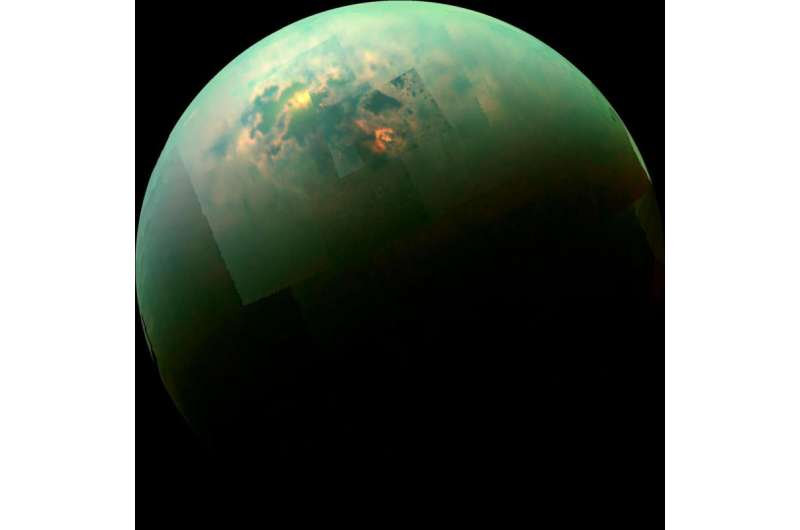NASA sails full-speed ahead in solar system exploration

NASA's Juno is now poised to shine a spotlight on the origins and interior structure of the largest planet in our solar system. As we wait for Juno's first close-up images of Jupiter (to be taken Aug. 27 during the spacecraft's next pass by the planet), NASA continues to explore our solar system to help answer fundamental questions about how we came to be, where we are going and whether we are alone in the universe.
"Juno is the latest example of the extraordinary science we have to look forward to right in our own solar system," said NASA Planetary Division Director Jim Green. "There are many uncharted, promising worlds and objects we are eager to explore with our current and future missions."
The James Webb Space Telescope (Webb telescope), set to launch in 2018, can observe not only faint objects across the universe, but also all of our neighboring planets and their moons within our solar system. Webb's angular and spectral resolution will allow us to observe these targets with unprecedented sensitivity and even follow geologic activity.
With Juno exploring Jupiter, NASA is also intrigued by its largest moons.
Io's intense geological activity makes it the most volcanically active world in the solar system, something Webb could potentially follow-up with. And NASA has selected nine science instruments for a future mission to investigate whether Europa—a mysterious moon that scientists believe to have a liquid ocean beneath its icy surface—hosts habitable environments.

Hubble, with its suite of upgraded instruments, has captured Jupiter's auroras and found evidence of saltwater on Jupiter's largest moon, Ganymede. The mission has been extended another five years, and NASA expects it to continue to provide excellent science.
NASA's Cassini spacecraft continues exploring Saturn, its rings and moons, as it has since 2004. In 2017, during the final phase of its long mission, Cassini will complete 22 dives through the narrow gap between Saturn's outer atmosphere and its rings. This exciting set of orbits, called the Grand Finale, will be like a whole new mission, with new views and profound new scientific insights.
Titan is one of the major satellites of Saturn, with a rich atmosphere and surface chemistry that has been observed extensively by Cassini and ESA's Huygens Probe. After Cassini's mission ends, Webb will begin operations, providing an excellent platform for continuing studies of Titan with its unique new capabilities.
On July 14, NASA celebrated the one-year anniversary of New Horizons' flyby of Pluto, which brought the world unprecedented views of the dwarf planet and its moon, Charon. The mission has been extended to study an object in the Kuiper belt, an icy field of early building blocks of the solar system packed with primordial organics.

NASA's Dawn mission set out to investigate the solar system's two largest asteroids remaining intact since their formation—Vesta and dwarf planet Ceres. The mission has revealed strange, bright regions on Ceres with the highest concentration of carbonate minerals ever seen outside Earth.
In September, NASA will launch OSIRIS-REx (Origins, Spectral Interpretation, Resource Identification, Security-Regolith Explorer), the first U.S. mission to a near-Earth asteroid (Bennu) to collect a sample for return to Earth in 2023. OSIRIS-REx will help unlock secrets of the history of our solar system, and shed light on how life may have come to be on our planet.
On our journey to Mars, we are closer than ever before to sending American astronauts to our neighboring Red Planet. The Opportunity and Curiosity rovers are traversing Martian soil, while MAVEN, the Mars Atmosphere and Volatile Evolution Mission, the Mars Reconnaissance Orbiter, and Mars Odyssey are cruising the Martian skies above. They are helping uncover Mars' past, present, and future by searching for clues in both the surface and the atmosphere.
The next Mars rover scheduled for launch in 2020 is under construction, and NASA's InSight Mission to study the interior of the Red Planet is scheduled to launch in 2018.
"We are fortunate to live during a time when grand scientific quests are possible, and in a country that values curiosity and discovery as inherently noble pursuits," says Paul Hertz, Astrophysics Division Director at NASA Headquarters in Washington.
NASA has recently directed nine planetary missions to plan for continued operations through fiscal years 2017 and 2018, contingent on available resources.
Provided by NASA





















